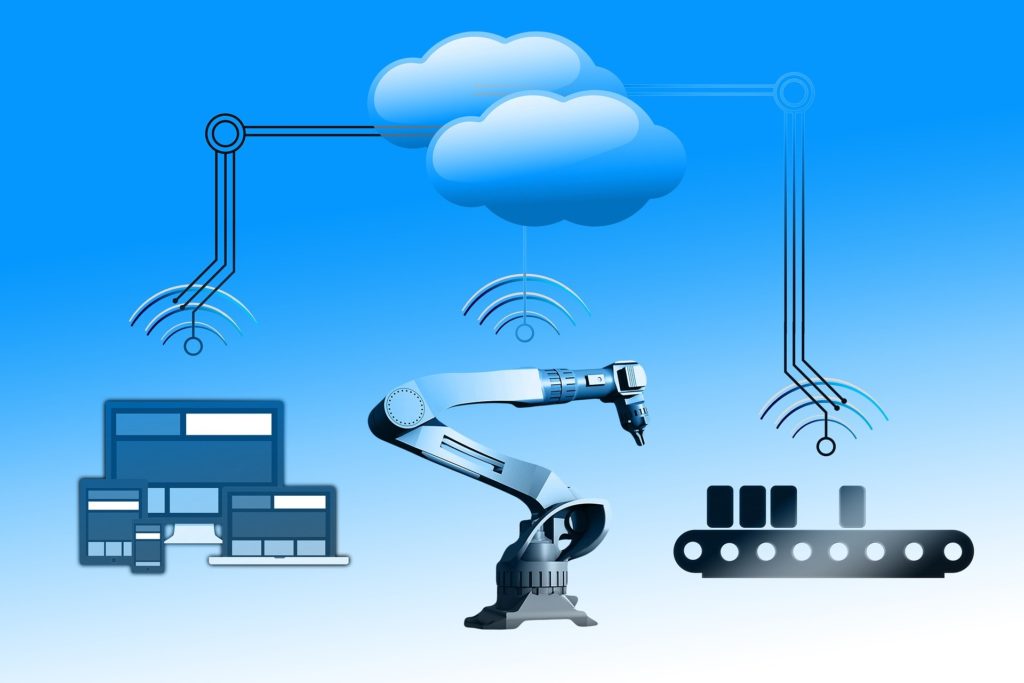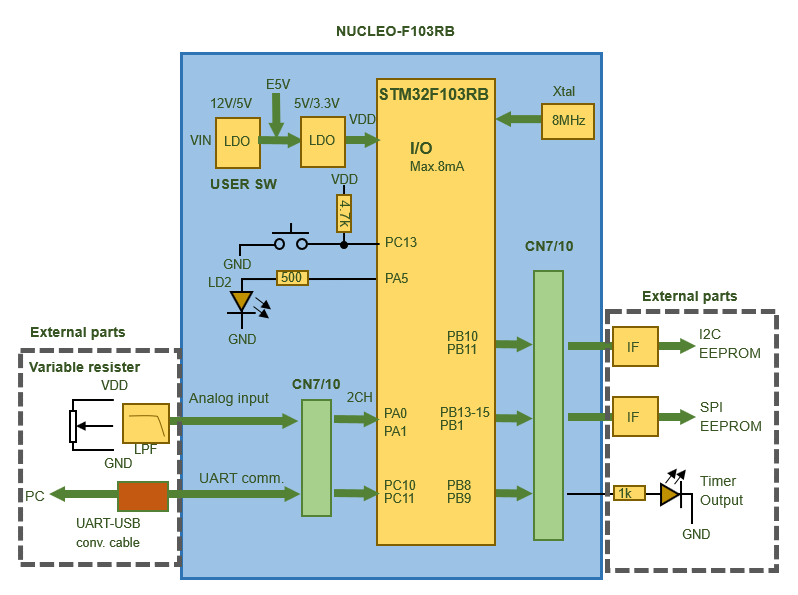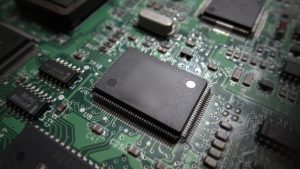Application program samples used in practice [useful for ARM electronic work]

Table of contents
- 1 Applications and Practices
- 1.1 GPIO Applications
- 1.2 Timer/counter Applications
- 1.3 SysTick interrupt Applications
- 1.4 External interrupts Applications
- 1.5 Serial communication USART Applications
- 1.6 ADC Applications
- 1.7 Serial communication I2C Applications
- 1.8 Serial communication SPI Applications
- 1.9 RTOS Applications
- 1.10 Measurement Applications
- 1.11 IoT Applications
Applications and Practices

In "Tutorial to ARM (STM32) Basics and Development", I have mainly explained the basics of the MCU peripherals, from the configuration of each peripheral to system design using MCU.

We will now use the teaching material board to create an actual application and check its operation.
The purpose of this course is to deepen your understanding by transferring actual programs to the teaching material board and checking their operation. First, let's learn the basics by running the program and then develop it into applications.

The educational board allows students to learn the functions of general-purpose I/O GPIOs, timers, AD converters, serial communication USART, and serial communication I2C while checking the actual hardware circuits.

When LED (with load resistor) and Pushbutton SW are connected as external components, general-purpose input/output applications can be created and operation can be checked. When a VR(variable resistor) is connected and an analog signal 0-5V is input, an application for AD conversion can be created and its operation checked.

In addition, a UART-USB conversion cable allows serial communication with a PC. If you want to check the numerical values of the imported data, you can use serial UART to display them on the PC screen.

In particular, once you are able to freely operate serial USART, you will be able to operate and monitor input/output from a PC, which can be developed into a variety of microcomputer applications, so please learn this at an early stage.

Let's try an application that uses a wireless LAN module to make Nucleo, a teaching material board, WiFi-enabled and IoT-enabled at the stage where you have finished learning the practical use of peripherals. For the wireless LAN module, we will use a module with ESP32, which is popular in electronic construction.

Furthermore, we would like to challenge applications for speed control and positioning control using motors equipped with encoders. Adding a sensor such as an encoder to a motor allows it to be developed into a motion control with advanced feedback control. This is the best way to check the basics of motion control where variable pulses are given as speed and position commands.

The possibilities for applications that can be developed using the Teaching Resource Board are endless. Depending on your ideas, you can realize quite a variety of things.

GPIO Applications
Timer/counter Applications
SysTick interrupt Applications
External interrupts Applications
Serial communication USART Applications
ADC Applications
Serial communication I2C Applications
Serial communication SPI Applications
RTOS Applications
Measurement Applications
IoT Applications
The tools for MCU development environment introduced on this site are provided free of charge.
To download them, please register using the contact form and obtain a password.










































